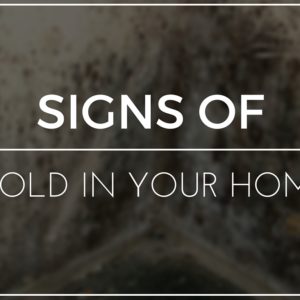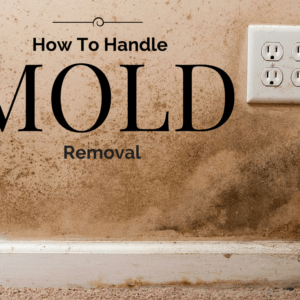Mold is a common household problem that can affect your property’s indoor air quality and, if left unchecked, even your health. Mold thrives in damp and dark environments, making bathrooms, kitchens, basements, and hidden corners most susceptible. This blog post will explore how to identify, prevent, and effectively deal with pesky mold in your property.
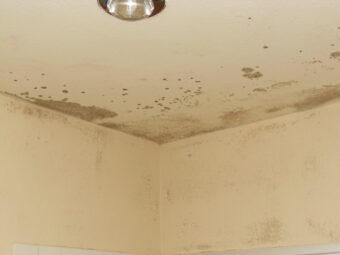 This guide highlights how to deal with mold in your property, but more in-depth information is also available. The EPA’s A Brief Guide to Mold, Moisture, and Your Home is a valuable resource for homeowners interested in more details. Property managers may be interested in the EPA’s guide, Mold Remediation in Schools and Commercial Buildings.
This guide highlights how to deal with mold in your property, but more in-depth information is also available. The EPA’s A Brief Guide to Mold, Moisture, and Your Home is a valuable resource for homeowners interested in more details. Property managers may be interested in the EPA’s guide, Mold Remediation in Schools and Commercial Buildings.
Why is Mold Growing in My Home?
Mold is a type of fungus that thrives in damp and humid conditions. Mold is a part of our natural environment and plays a crucial role in speeding up the decomposition of organic matter outdoors. Indoors, mold spores should be avoided. Mold can grow on various surfaces, typically moist absorbent or porous materials. This includes walls, floors, furniture, and even clothes. The main reason for mold growth in homes is excess moisture, which can be due to leaks, condensation, or high humidity levels.
Can Mold Cause Health Problems?
Yes, exposure to mold can cause health problems. Some people who are sensitive to mold may experience symptoms such as nasal stuffiness, throat irritation, coughing, wheezing, asthma attacks, eye irritation, or, in some cases, skin irritation. People who are allergic to mold may have more severe reactions, and those with weakened immune systems or chronic lung illnesses can get serious lung infections when exposed to mold.
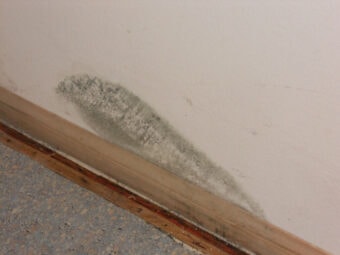
How Do I Get Rid of Mold in My Home?
To get rid of mold in your home, you must clean up the visible mold and eliminate the source of mold-causing moisture. Below is a step-by-step guide for how to get rid of mold in your home.
1. Identify the Mold
The first step in dealing with mold is to identify its presence. Mold comes in various colors: black, green, white, and orange. It often appears as patches on walls, ceilings, or floors. If you notice a musty odor, discolored spots, or visible signs of mold growth, it’s time to take action.

2. Find the Source of Moisture
Mold needs moisture to thrive, so identifying and eliminating the source of moisture is crucial. Common sources of moisture include:
- Leaky pipes or roofs
- High humidity levels
- Poor ventilation
- Flooding
Common actions that can help prevent excess moisture indoors are:
- Fixing leaky pipes, roofs, and appliances
- Venting appliances that produce moisture (dryers, stoves, etc) outdoors
- Using dehumidifiers in rooms that are often humid (bathrooms, laundry rooms)
- Cracking the window while showering or bathing
3. What to Wear While Cleaning Up Mold
If you’re cleaning up mold, it’s important to protect yourself. Wear long gloves that extend to the middle of your forearm, goggles that do not have ventilation holes, and an N-95 respirator. Also, wear old clothes and shoes you can launder or throw away after the cleanup work. Mold can release harmful spores that may cause health issues, so wear the following:
- N95 respirator mask
- Gloves
- Goggles
- Long-sleeved clothing
4. Clean and Remove Mold
Small-scale mold infestations can be tackled with this DIY cleaning method:
- Mix a solution of water and mild detergent.
- Scrub the affected area gently with a brush or sponge.
- Rinse thoroughly, ensuring no soap residue is left behind.
- Dry the area thoroughly using fans or dehumidifiers.
Biocides, a.k .a. cleaning compounds like chlorine bleach that can destroy living organisms, are not recommended during mold cleanup. There may be instances when professional restoration companies deem it necessary (for example, when immune-compromised individuals are present). In most cases, sterilizing an area is not possible or desirable, and a background level of mold spores will remain even after cleanup. But the good news is that these background-level spores will not grow if the moisture problem has been resolved.
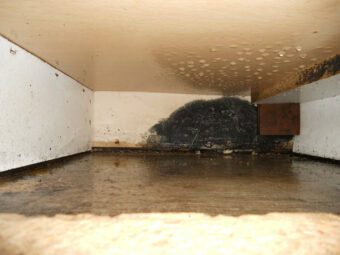 For more significant mold problems or cases where the mold is growing inside walls or other hidden areas, it’s best to consult a professional mold remediation service. Call us 619 234 2500
For more significant mold problems or cases where the mold is growing inside walls or other hidden areas, it’s best to consult a professional mold remediation service. Call us 619 234 2500
5. Discard Affected Materials
Mold can compromise porous materials like drywall, insulation, or carpet and is often difficult to clean. In such cases, it’s best to remove and replace these materials. Always seal moldy materials in plastic bags before disposal to prevent the spread of spores.
6. Prevent Mold from Returning
Preventing mold from returning is equally important:
- Maintain proper ventilation in bathrooms and kitchens to reduce humidity.
- Fix leaks promptly.
- Use exhaust fans in high-moisture areas.
- Keep the property well-insulated to prevent condensation.
- Regularly clean and maintain your HVAC system.
- Consider using mold-resistant paint in susceptible areas.
7. Monitor and Maintain
Once you’ve dealt with mold, monitoring and maintaining your property to prevent future outbreaks is crucial. Regularly inspect your property for signs of water damage or mold growth, and take prompt action if you notice any issues.
How to Prevent Mold from Growing in Your Home
Preventing mold involves controlling moisture in your home. Use dehumidifiers and air conditioners to maintain humidity levels between 30-50%. Fix leaks promptly, ensure your home is well-ventilated, especially in high-moisture areas like the bathroom and kitchen, and keep gutters clean and free of debris to prevent water seepage into your home.
When to Call in Restoration Professionals to Deal with Mold in Your Home
If you have extensive mold growth, if the mold keeps coming back after cleaning, or if you have a mold allergy, it’s best to call in professionals. They have the equipment and expertise to remove extensive mold growth safely and can also help prevent future infestations. Remember, simply killing the mold with a biocide is not enough. The mold must be removed since the chemicals and proteins that can cause a reaction in humans are still present even in dead mold.
 Certified Restoration is here to help you with your mold problem. Our highly experienced and professional San Diego mold remediation specialists can remove your mold infestations quickly and completely so you and your family are not exposed to unnecessary risks. Our team responds to all emergencies at any time of the day, no matter how big or small. Don’t hesitate to call us if you find signs of mold in your home!
Certified Restoration is here to help you with your mold problem. Our highly experienced and professional San Diego mold remediation specialists can remove your mold infestations quickly and completely so you and your family are not exposed to unnecessary risks. Our team responds to all emergencies at any time of the day, no matter how big or small. Don’t hesitate to call us if you find signs of mold in your home!
Dealing with mold in your property is crucial for maintaining a safe and healthy indoor environment. By being proactive and vigilant, you can ensure your property remains mold-free, and your indoor air quality stays at its best.
Disclaimer
This article is for general information ONLY and is not intended to be legal, medical, or scientific advice. The proper approach to each project must be determined on a case-by-case basis. Certified Restoration always recommends that you call a certified restoration professional, especially when there are children, elderly, or individuals with health conditions residing in the property.
